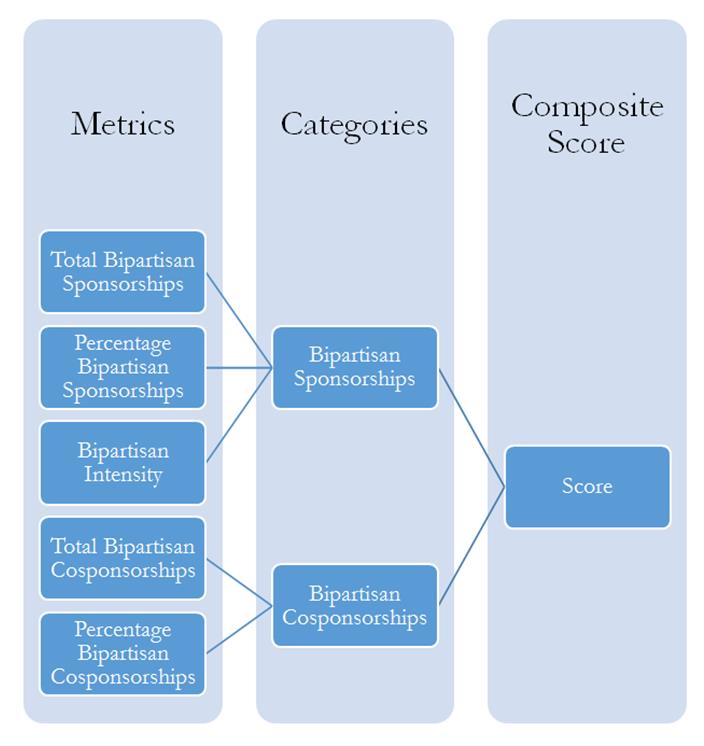Our Work
- Bipartisan Governance & Oversight
- Bipartisan Index
- 2023 House Scores
- 2023 Senate Scores
- 117th Congress Senate Scores
- 117th Congress House Scores
- 2021 Senate Scores
- 2021 House Scores
- 116th Congress Senate Scores
- 116th Congress House Scores
- 2019 Senate Scores
- 2019 House Scores
- Lifetime Senate Scores
- 115th Congress: Senate Scores
- 115th Congress: House Scores
- 2017 Senate Scores
- 2017 House Scores
- 114th Congress: Senate Scores
- 114th Congress: House Scores
- 2015 Senate Scores
- 2015 House Scores
- 113th Congress: Senate Scores
- 113th Congress: House Scores
- 103rd-112th Congresses: Senate Scores
- Age Study
- State Rankings
- Maps
- Bipartisan Representatives in Partisan Districts
- Statistics
- Methodology
- FAQs
- Press
- Oversight Hearing Index
- University Project for Bipartisan Collaboration
- Oversight Boot Camps
- Speeches
- Bipartisan Index
- Global Food Security
- WMD Nonproliferation
- Foreign Aid Effectiveness
Our Team
Methodology
Overview of The Lugar Center-McCourt School Bipartisan Index
The Lugar Center-McCourt School Bipartisan Index is a means of quantifying congressional members’ bipartisan behavior on the basis of bill sponsorship and co-sponsorship. Our aim in publishing this Index is not to promote a specific legislative agenda, as is the case for many indexes, but solely the promotion of a bipartisan approach to governance. The credibility of the Index is derived from the objectivity of its methodology; Index scores are computed formulaically from publically available data. The Index requires no subjective assessment of specific legislative items.
Index scores are based on two broad, equally weighted categories: Bipartisan Sponsorships and Bipartisan Co-sponsorships. A Bipartisan Sponsorship is defined as the introduction of a bill that attracts cosponsors from the opposing party. Similarly, a Bipartisan Co-sponsorship is the act of a congressional member adding his or her name in support of a bill introduced by a member of the opposing party.
These two categories are subdivided into specific metrics. Bipartisan Co-sponsorship is measured from the total number of Bipartisan Co-sponsorships made by a congressional member and the number of Bipartisan Co-sponsorships as a percentage of all co-sponsorships made by a given member.
Bipartisan Sponsorships are similarly subdivided with the addition of a metric for Bipartisan Intensity, a means of weighting how many bipartisan co-sponsors a bill attracts. The count and percentage of Bipartisan Sponsorships are binary designations, a bill is counted if it has at least one cosponsor from the opposing party otherwise it is not counted. Attracting a single cosponsor from the opposing party is the most important threshold for bipartisanship, but some bills are more bipartisan than others. Bipartisan Intensity rewards members for introducing bills that receive more support from the opposing party, but with diminishing returns.
A House bill with 20 Bipartisan Co-sponsors is certainly more bipartisan than a bill with only one or two Bipartisan Co-sponsors, but a House bill with 40 Bipartisan Co-sponsors is only marginally more bipartisan than one with 20 such co-sponsors. Recognizing this, Bipartisan Intensity is defined as the base two logarithm of the average number of Bipartisan Co-sponsors a member attracted to their bills that received at least one Bipartisan Co-sponsor. This method allocates a proportional increase in the Bipartisan Intensity metric whenever the average number of Bipartisan Co-sponsors doubles. For example, an average of 1 Bipartisan Co-sponsor would result in a score of 0 for Bipartisan Intensity, an average of 2 Bipartisan Co-sponsors a score of 1, an average of 4 Bipartisan Co-sponsors a score of 2, etc.
Before a weighted average can be applied, the individual metrics must be standardized[1] using an historical reference to make them comparable to each other and to previous Congresses. Specifically, metrics are compared to their average and standard deviation measured over a twenty-year period from the 103rd Congress to the 112th Congress. The time chosen is an arbitrary benchmark from which we can compare performance. Since standardized metrics are evaluated using historical values for average and standard deviation, the average of a given metric across a Congress is not defined as zero, as would be the case if standardization were calculated from average and standard deviation of the current Congress. This, however, is a useful result allowing historical comparisons between entire Congresses. Furthermore, standardization is separated for the minority and majority party. Due to institutional differences between the opportunities available to the majority and minority party, members of Congress currently in the minority party have their metrics standardized by the historical average and standard deviation of the minority party; likewise, members of the majority party are compared to the historical majorities. Comparing both parties to an average or standard deviation encompassing both parties would systematically favor the minority party. Members of the minority, regardless of party, tend to co-sponsor significantly more bills introduced by the opposite party than the majority. This is because the minority party is less able to influence legislation without going through a member of the majority. Though members of the majority party enjoy higher Bipartisan Sponsorship scores from this fact, the increase is not proportional to the rise in Bipartisan Co-sponsorship scores.
Once metrics are converted into standardized values they become comparable to each other. A congressional member’s overall score is a weighted average of the five standardized metrics. The weighting system heavily favors the percentage of Bipartisan Sponsorships and the percentage of Bipartisan Co-sponsorships a member makes. The emphasis on percentages accounts for the differences in opportunity to sponsor or cosponsor legislation arising from differences in seniority or position as a committee chair or ranking member. Counts of Bipartisan Sponsorships and Co-sponsorships remain a small component of the score, however, to incentivize members to seek out opportunities for bipartisan cooperation.
Bills, but not resolutions, are included in the analysis. Additionally, narrow exclusions are applied to remove private bills and those that are purely commemorative from the analysis, such as bills that name Post Offices or create commemorative coins. To ensure that these exclusions are applied fairly and consistently, they are removed via a computer program based on explicit criteria. These exclusions are necessary as bills of commemorative nature typically attract a level of bipartisan support that is not comparable to typical legislation. While commemoration of events and individuals is an important function of Congress such actions do not represent the prioritization of problem solving and governance that the Index hopes to promote.
Though several steps are taken to ensure the Bipartisan Index presents a fair and informative narrative of bipartisanship, the Index at its core is quite simple. Members of Congress can increase their score either by actively seeking out agreeable ideas proposed by the opposite party or by drafting legislation that is likely to attract members of the other party. The Index rewards those who prioritize governance over posturing and aims to encourage members of Congress to seek areas of consensus as opposed to simply using legislation to delineate differences.
[1] Note: The Index makes no assumption of normality when standardizing the data. In fact, it is known that these metrics exhibit a positive skew.
Schematic of The Lugar Center-McCourt School Bipartisan Index



